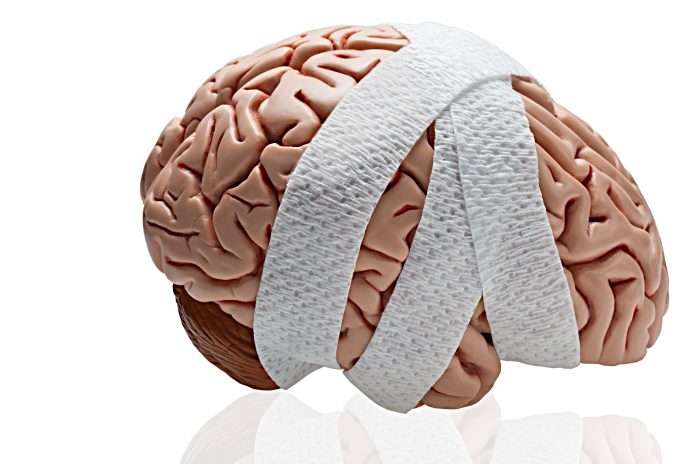
Roughly one-third of all patients who experience a concussion go on to experience lingering, long-term effects based on pathology that is undetected by current head injury guidelines for the use of CT scans. Now, a team of researchers in England say that the use of an advanced form of MRI called diffusion tensor imaging (DTI) can substantially improve prognostic models and help identify those patients with traumatic brain injury (TBI) who may need ongoing care whose condition may not have been detected by CT.
“Current methods for assessing an individual’s outlook following head injury are not good enough, but using DTI—which, in theory, should be possible for any center with an MRI scanner—can help us make much more accurate assessments,” said senior author of the research, published today in eClinical Medicine. “Given that symptoms of concussion can have a significant impact on an individual’s life, this is urgently needed.”
CT scans only identify about 10% of patients with post-concussion abnormalities, but as many as 40% of patients discharged from emergency departments after admission for a head injury can suffer from significant symptoms including fatigue, headache, poor memory, and a range of mental health symptoms such as anxiety and depression.
The care gap DTI can help address is that many concussion patients are told to consult with their primary care physicians should they experience lingering symptoms. But both the patient and their physician often don’t recognize whether any lingering symptoms are serious enough for follow-up, said Newcombe, who is also an intensive care medicine and emergency physician at Addenbrooke’s Hospital, Cambridge, England.
“Patients describe it as a ‘hidden disease,’ unlike, say, breaking a bone,” she added. “Without objective evidence of a brain injury, such as a scan, these patients often feel that their symptoms are dismissed or ignored when they seek help.”
The MRI method, the team used in their research, DTI, works by showing how water molecules move within tissue, providing detailed images within pathways in the brain called white matter tracts that serve to connect different regions of the brain. MRI scanners can be adapted to capture this data to help generate a DTI score derived from how many areas of the brain exhibit abnormalities.
For their study, the investigators examined MRI data from more than 1,000 patients who were enrolled in the Collaborative European NeuroTrauma Effectiveness Research in Traumatic Brain Injury (CENTER-TBI) study between December 2014 and December 2017. Of those patients, 38% had an incomplete recovery from their TBI, defined as experiencing symptoms for three months or longer after the initial injury.
The 153 patients who had received a DTI scan were assigned scores based on their scan data. This improved prognostic accuracy. Current clinical methods would correctly predict in 69 cases out of 100 that a patient would have a poorer outcome, while DTI increased this to 82 cases out of 100.
The team also studied blood biomarkers that are present after a head injury to see whether any of these could be used to help improve prognostic accuracy. While biomarker analysis alone was not shown to be sufficient to improve prognostic accuracy, the identification of two blood biomarkers— glial fibrillary acidic protein (GFAP) within the first 12 hours and neurofilament light (NFL) within 12 to 24 hours—can help stratify which patients should be referred for DTI.
Based on these findings, the investigators plan to follow up this research with a more in-depth examination of blood-based biomarkers of TBI to see if they can identify simpler, more practical predictors of persistence of concussion symptoms, while also exploring ways in which DTI can be effectively integrated within current clinical practices.





